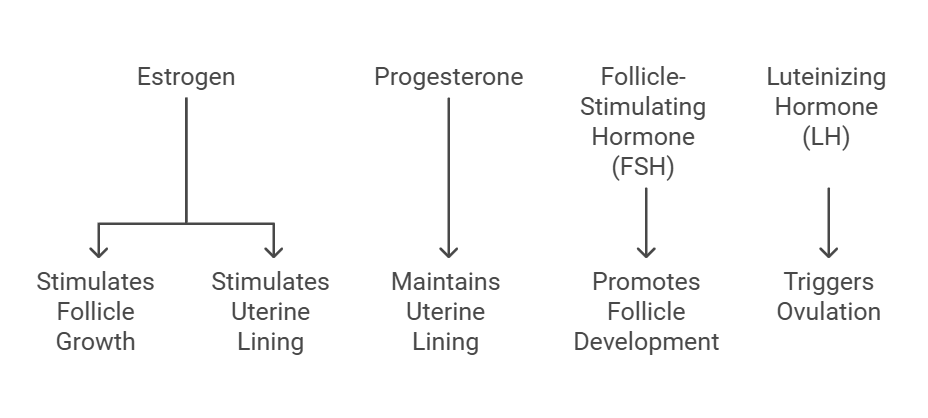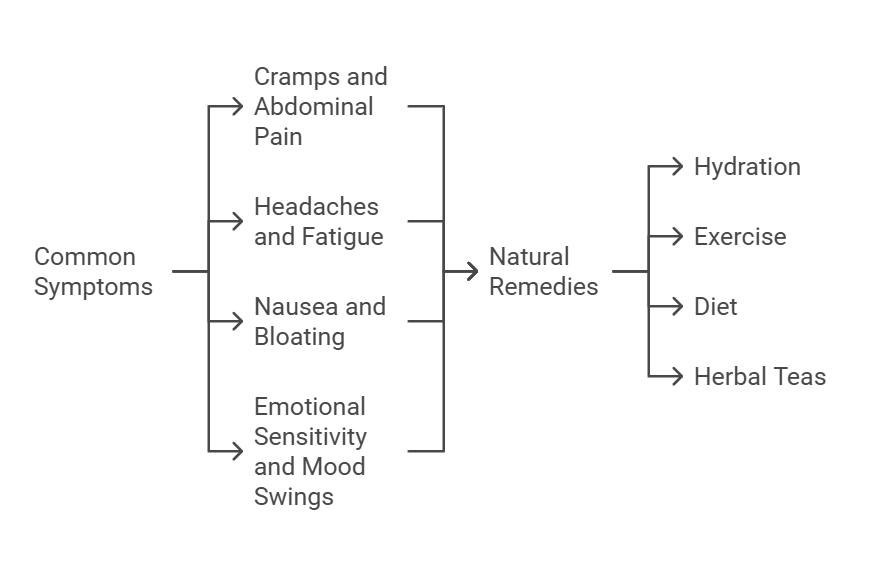
The menstruation stage is a vital biological process that governs the reproductive health of individuals assigned female at birth. It involves a series of hormonal fluctuations and physical changes that prepare the body for pregnancy each month. This complex process, often referred to as the menstrual cycle, typically spans 28 days and consists of multiple phases, each characterized by distinct hormonal activities and symptoms.
What Is the Menstruation Stage?
The menstruation stage, also known as a period, marks the first phase of the menstrual cycle. During this time, the uterine lining sheds, resulting in menstrual bleeding. This phase signals the beginning of a new cycle and resets hormonal levels to prepare the body for a potential pregnancy.
Key hormones like estrogen and progesterone play a critical role in regulating the cycle and influencing mood, energy levels, and overall well-being. Understanding these hormonal changes can help individuals manage symptoms like mood swings, cramps, and fatigue.
Phases of the Menstrual Cycle and Hormonal Changes
Menstrual Phase
This phase begins with menstrual bleeding, lasting 3–7 days. Hormone levels, including estrogen and progesterone, are at their lowest, leading to the shedding of the uterine lining. Symptoms may include:
- Fatigue
- Cramping
- Mood swings
- Headaches
Hormones During Menstruation:
- Estrogen: Low levels can cause fatigue and irritability.
- Progesterone: Decreases, leading to uterine contractions.
Follicular Phase
Starting on the first day of menstruation, this phase overlaps with the menstrual phase and continues until ovulation. It is marked by rising estrogen levels, which stimulate the growth of follicles in the ovaries.
Hormones and Menstrual Cycle Changes:
- Follicle-Stimulating Hormone (FSH): Promotes follicle development.
- Estrogen: Thickens the uterine lining for possible implantation.
Symptoms:
- Increased energy
- Improved mood
- Clearer skin
Ovulatory Phase
Midway through the cycle, ovulation occurs, typically around day 14. An egg is released from the ovary, ready for fertilization. This phase is often associated with mood swings and noticeable physical changes.
Hormones During Ovulation:
- Luteinizing Hormone (LH): Triggers ovulation.
- Estrogen: Peaks, boosting libido and energy.
Symptoms:
- Mild cramps or twinges (mittelschmerz)
- Breast tenderness
- Increased cervical mucus
Luteal Phase
After ovulation, the body prepares for pregnancy. Progesterone dominates this phase, stabilizing the uterine lining. If fertilization does not occur, hormone levels drop, triggering menstruation.
Hormonal Changes During Period Cycle (Luteal Phase):
- Progesterone: Supports uterine lining for pregnancy.
- Estrogen: Fluctuates to balance the hormonal cycle.
Symptoms:
- Bloating
- Breast soreness
- Food cravings
- Mood swings
Hormonal Cycle: Key Hormones in Menstruation and Ovulation
Hormones and Their Functions in the Menstrual Cycle

Hormonal Imbalance Symptoms
- Irregular cycles
- Heavy or light periods
- Severe PMS or mood swings
- Acne or skin issues
Balancing these hormones through diet, exercise, and stress management can improve menstrual health and alleviate symptoms.
Stages of Menstrual Cycle Symptoms and Management

Common Symptoms During the Menstrual Cycle
- Cramps and abdominal pain
- Headaches and fatigue
- Nausea and bloating
- Emotional sensitivity and mood swings
Natural Remedies and Tips for Symptom Relief
- Hydration: Reduces bloating and fatigue.
- Exercise: Promotes endorphin release to ease cramps.
- Diet: High in iron and magnesium to balance hormones.
- Herbal Teas: Chamomile and ginger to soothe pain.
Conclusion
The menstruation stage is an essential aspect of reproductive health, involving intricate hormonal changes and physical adjustments. Understanding the phases and hormones of the menstrual cycle empowers individuals to manage symptoms effectively and maintain hormonal balance.
By tracking the monthly cycle of hormones and recognizing patterns in mood swings, cramps, and ovulation, individuals can take proactive steps to support their well-being. Whether through lifestyle adjustments, natural remedies, or medical guidance, menstrual health can be optimized for a smoother and healthier cycle.
FAQs
What are the four stages of the menstrual cycle?
The four stages include the menstrual phase, follicular phase, ovulatory phase, and luteal phase, each defined by specific hormonal changes.
How do hormones affect mood during the menstrual cycle?
Fluctuations in estrogen and progesterone levels impact serotonin, leading to mood swings and irritability, especially before and during periods.
What happens during ovulation?
Ovulation is the release of an egg from the ovary, triggered by a surge in LH and estrogen. It occurs around day 14 of a 28-day cycle.
Can diet and lifestyle affect hormone levels?
Yes, a balanced diet, regular exercise, and stress management can regulate hormones and reduce symptoms like cramps and mood swings.
How long does the menstruation stage last?
The menstruation stage usually lasts between 3–7 days, depending on individual hormonal cycles and health conditions.
What causes irregular periods?
Irregular periods can result from stress, hormonal imbalances, weight changes, or medical conditions like polycystic ovary syndrome (PCOS).

